Did you know that some of the world’s rarest succulents can sell for thousands of dollars? Whether you’re a seasoned collector or just starting your succulent journey, these 15 extraordinary specimens will transform your collection from ordinary to exceptional. From the mesmerizing spiral leaves of the Trachyandra Tortilis to the shimmering rainbow hues of the Elephant Bush, each plant offers unique characteristics you won’t find in typical garden centers.
Contents
1. Crinkled Jade Succulent

The Crinkled Jade (Crassula arborescens undulatifolia) is a unique variety of jade plant characterized by its distinctive wavy, rippled leaves that give it an almost sculptural appearance. This slow-growing succulent typically reaches heights of 2-3 feet and features thick, fleshy leaves in a blue-green color with reddish edges when exposed to bright light. Native to South Africa, it produces small star-shaped white or pink flowers in winter under ideal conditions, though flowering is rare in cultivation.
- Light: Bright, indirect sunlight; can tolerate full sun in cooler climates
- Water: Allow soil to dry completely between waterings; reduce watering in winter
- Soil: Well-draining cactus or succulent mix
- Temperature: 60-75°F (15-24°C); protect from frost
- Humidity: Low to moderate; tolerates dry air well
- Fertilizer: Light feeding with balanced fertilizer during growing season
- Container: Pot with drainage holes; terra cotta recommended
- Propagation: Easily propagated through leaf or stem cuttings
2. Chinese Dunce Cap Succulent
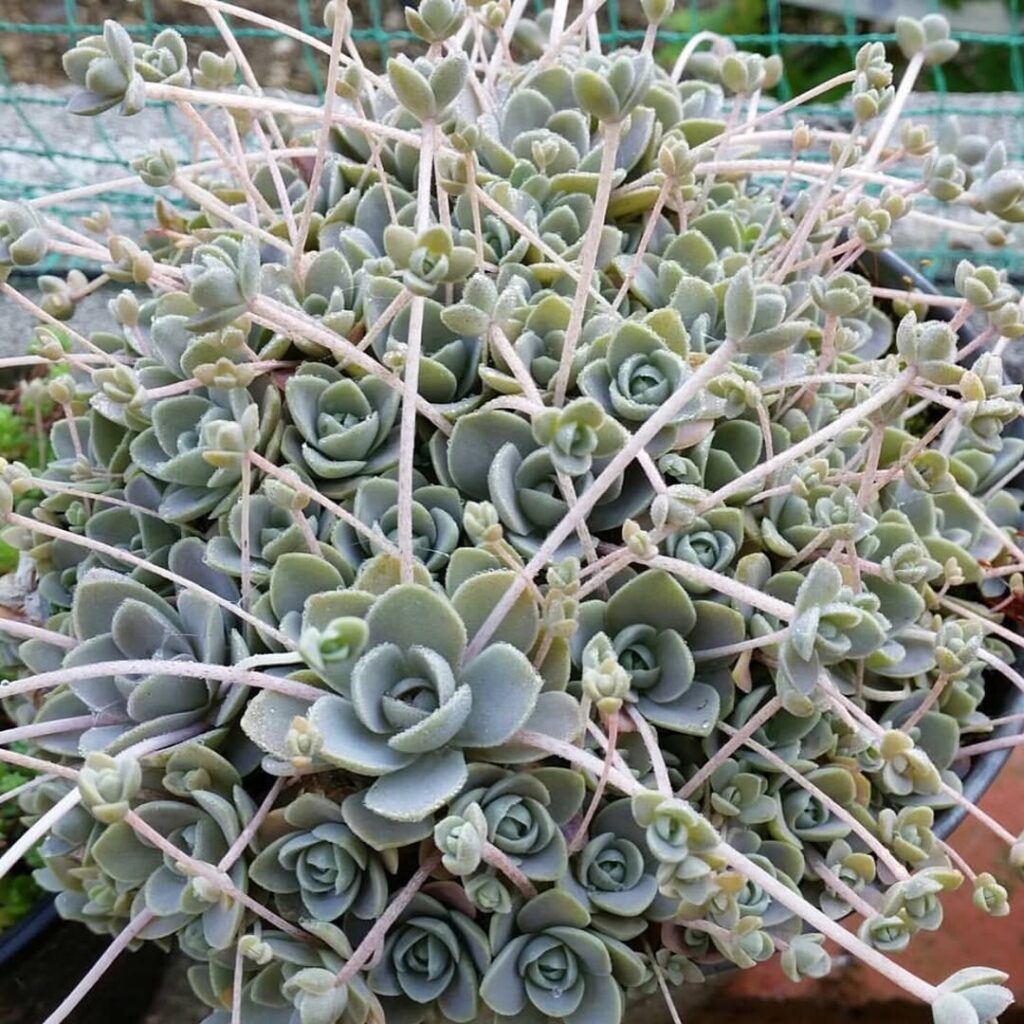
The Chinese Dunce Cap (Orostachys iwarenge) is a unique rosette-forming succulent native to China and Japan, featuring pointed, fleshy leaves that grow in a distinctive cone-like shape. This slow-growing plant typically reaches 2-4 inches in height and produces small white or pink flowers on tall stalks during late summer or fall. The plant gets its common name from its resemblance to the cone-shaped “dunce cap” historically used as punishment in schools. After flowering, the main rosette dies, but the plant continues through its offsets.
- Light: Bright indirect light to partial sun; protect from intense afternoon sun
- Water: Moderate watering during growing season; reduce considerably in winter
- Soil: Well-draining succulent mix with added grit or perlite
- Temperature: Tolerates 20-90°F (-6 to 32°C); cold hardy
- Humidity: Low to moderate; tolerates average household humidity
- Container: Shallow pot with drainage holes
- Fertilizer: Light feeding with balanced fertilizer during growing season
- Growing Season: Spring through fall
- Propagation: Through offsets or leaf cuttings
3. Trachyandra Tortilis
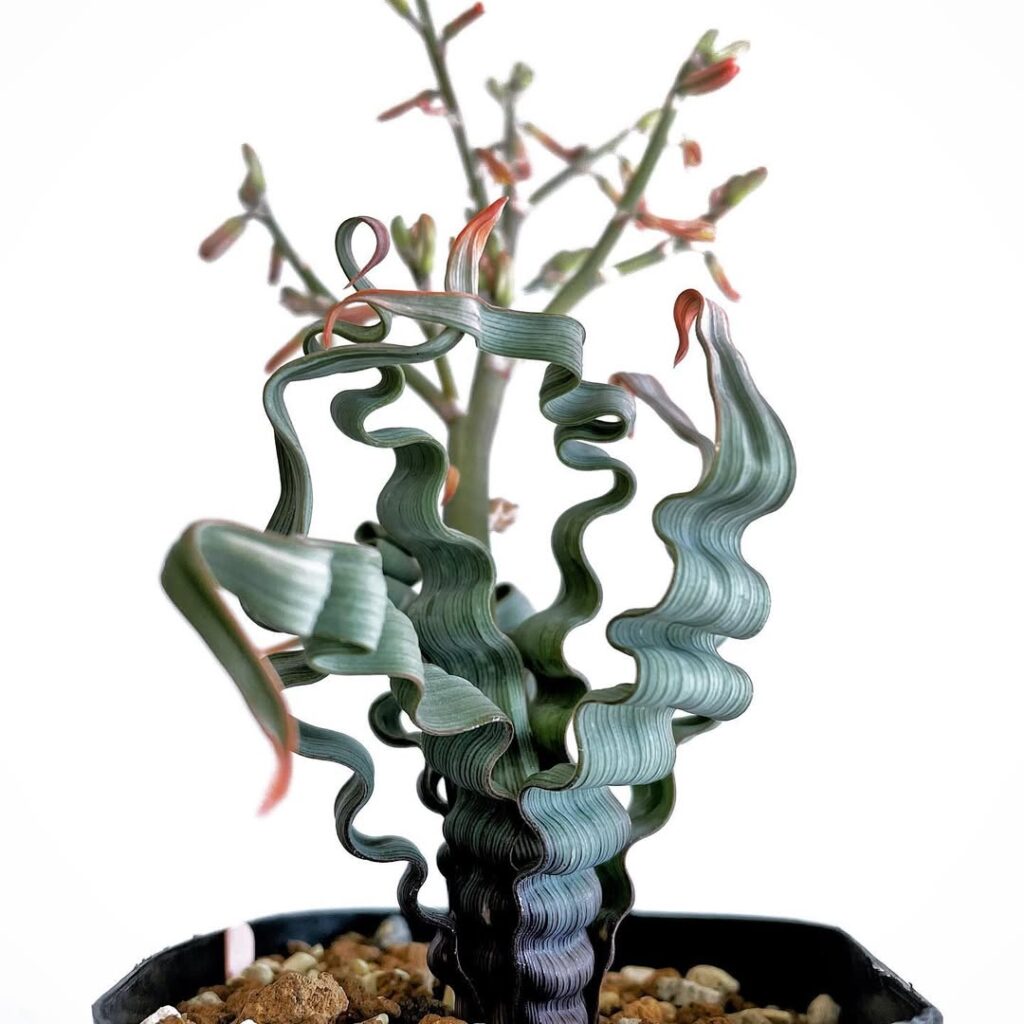
Trachyandra Tortilis is a rare succulent native to South Africa, known for its uniquely twisted, serpentine leaves that spiral and curl in unusual patterns, making it highly sought after by collectors. The leaves emerge straight and gradually develop their characteristic spiral form as they mature, creating a striking architectural appearance that resembles green corkscrews or springs. This slow-growing succulent typically remains compact, reaching only about 6-8 inches in height, making it suitable for small spaces and container gardens.
- Light: Bright indirect sunlight to partial shade; protect from intense afternoon sun
- Water: Moderate watering during growing season; reduce considerably during winter dormancy; allow soil to dry between waterings
- Soil: Well-draining succulent mix with added perlite and coarse sand
- Temperature: Prefers 65-80°F (18-27°C); protect from frost
- Humidity: Tolerates average household humidity; does not require high humidity
- Fertilizer: Light feeding with balanced fertilizer during growing season
- Container: Shallow pot with drainage holes
- Growing Season: Active growth in spring and summer; semi-dormant in winter
4. Variegated String of Hearts
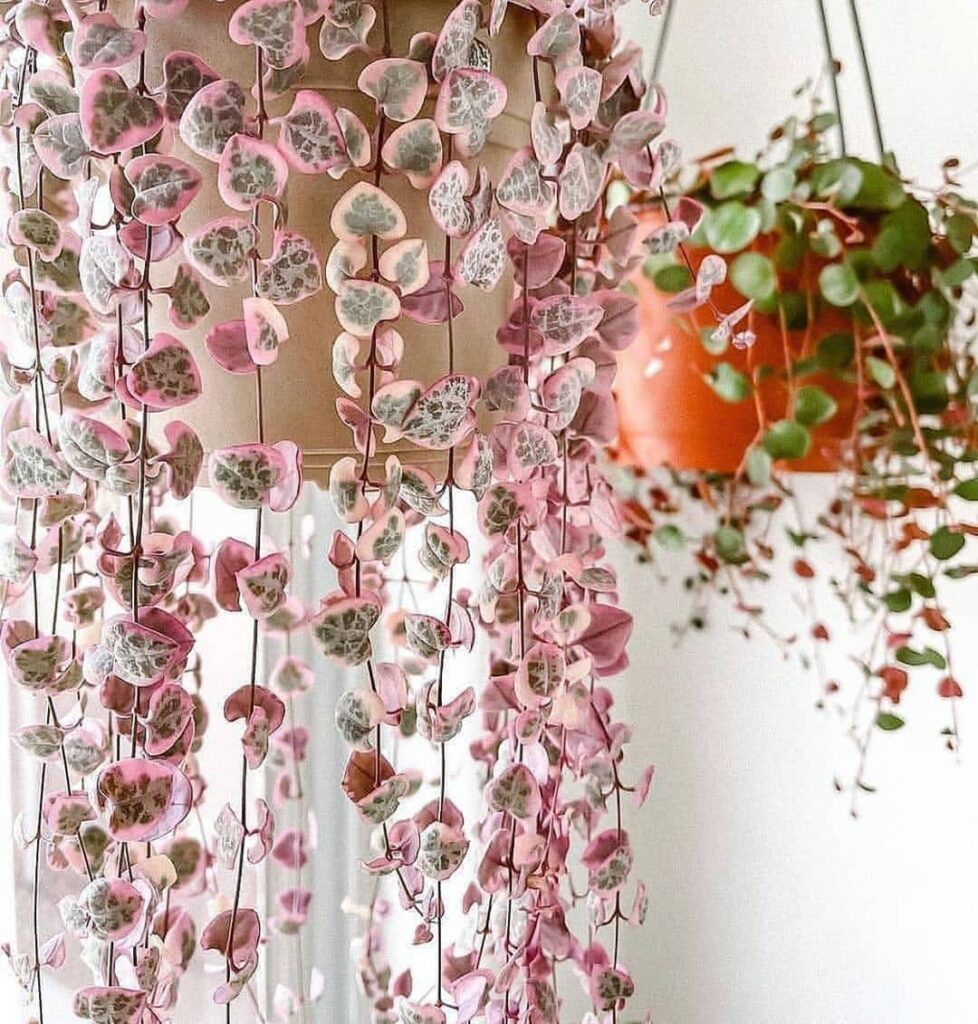
The Variegated String of Hearts (Ceropegia woodii variegata) is a striking trailing succulent featuring heart-shaped leaves with distinctive cream, pink, and green variegation patterns. This delicate vine produces small, elongated leaves along thin, string-like stems that can grow several feet long. The variegated form is particularly sought after by collectors due to its rarity and unique coloring, which creates an eye-catching cascading display when grown in hanging baskets or allowed to trail from elevated planters.
- Light: Bright, indirect sunlight; can tolerate some direct morning sun but protect from harsh afternoon rays
- Water: Allow soil to dry completely between waterings; reduce watering in winter
- Soil: Well-draining cactus mix or regular potting soil mixed with perlite and sand
- Temperature: Prefers 65-80°F (18-27°C); protect from frost
- Humidity: Tolerates average household humidity levels
- Container: Use pots with drainage holes; hanging baskets or elevated containers work well
- Fertilizer: Feed with diluted succulent fertilizer during growing season
- Propagation: Easily propagated through stem cuttings or tubers
5. Rainbow Elephant Bush
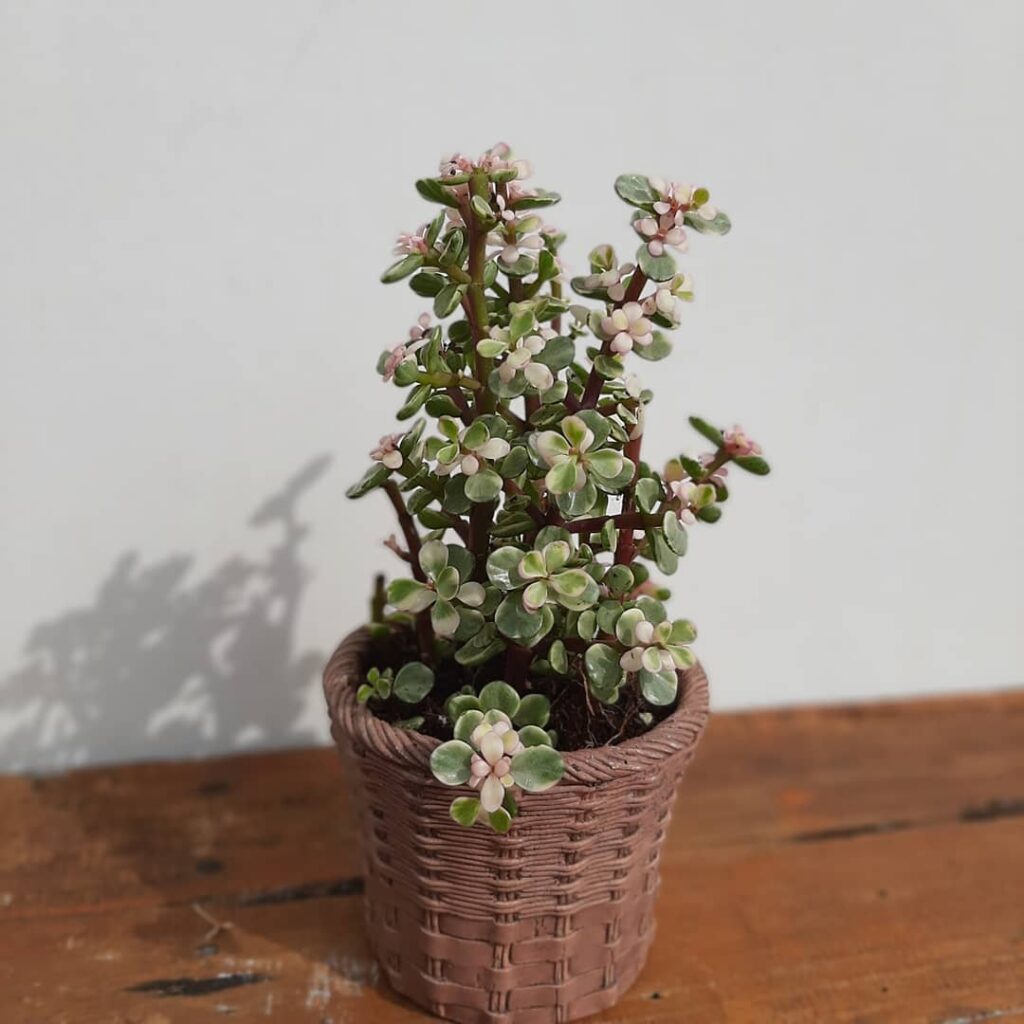
The Rainbow Elephant Bush (Portulacaria afra variegata) is a striking succulent variety featuring cream and green variegated leaves on reddish stems. This compact, slow-growing plant reaches heights of 2-4 feet when grown as a houseplant and develops a thick trunk reminiscent of a miniature tree. Its small, round leaves grow in opposite pairs along the branches, creating an elegant cascading appearance that makes it popular for bonsai arrangements and hanging baskets.
- Light: Bright indirect sunlight; can tolerate some direct morning sun but needs protection from harsh afternoon rays
- Water: Allow soil to dry completely between waterings; reduce watering in winter
- Soil: Well-draining cactus or succulent mix with added perlite
- Temperature: 65-80°F (18-27°C); not frost tolerant
- Humidity: Tolerates average household humidity
- Fertilizer: Light feeding with balanced fertilizer during growing season
- Container: Pot with drainage holes to prevent root rot
- Propagation: Easily propagated through stem cuttings
6. Blue Giant Sea Squill

The Blue Giant Sea Squill (Drimia maritima) is a massive succulent native to coastal Mediterranean regions, featuring a large bulb that can grow up to 8 inches in diameter. This impressive plant produces tall flower spikes reaching up to 6 feet in height, adorned with numerous small white flowers that bloom in late summer. Its long, strap-like leaves emerge in fall and winter, forming a robust rosette that dies back in spring before the flowering period. The plant is known for its toxicity and historical medicinal uses, though handling should be done with caution.
- Light: Full sun to partial shade; tolerates intense sunlight
- Water: Minimal watering needed; drought-tolerant; requires good drainage
- Soil: Well-draining, sandy or rocky soil; tolerates poor soil conditions
- Temperature: Hardy in zones 8-11; can withstand light frost
- Growing Season: Active growth in fall and winter; dormant in summer
- Container Requirements: Deep pots to accommodate large bulb; must have drainage holes
- Fertilization: Light feeding during growing season; avoid fertilizing during dormancy
7. Buddha’s Temple Succulent
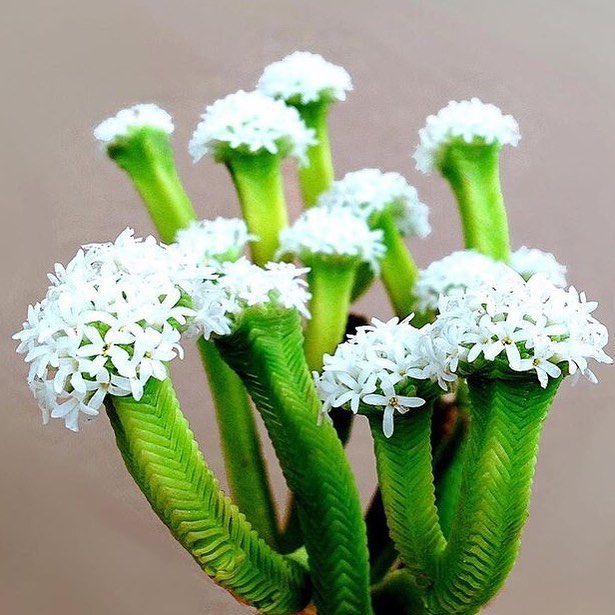
The Buddha’s Temple (Crassula pyramidalis) is a striking columnar succulent known for its distinctive architectural form, featuring perfectly stacked, tightly packed blue-green leaves arranged in four neat rows that create a square tower-like appearance. This rare succulent can grow up to 6 inches tall and produces small white flowers at its apex when mature. Its unique geometric shape and compact growth habit make it a highly sought-after specimen among collectors, though it requires careful attention to maintain its pristine form.
- Light: Bright indirect sunlight with some morning sun; protect from intense afternoon sun
- Water: Water sparingly when soil is completely dry; reduce watering in winter
- Soil: Well-draining cactus or succulent mix with added perlite and grit
- Temperature: Prefers 65-80°F (18-27°C); protect from frost
- Humidity: Low humidity; tolerates average indoor conditions
- Container: Small pot with drainage holes
- Fertilizer: Light feeding with balanced succulent fertilizer during growing season
- Propagation: Leaf cuttings or careful separation of offsets
8. Tiger Aloe
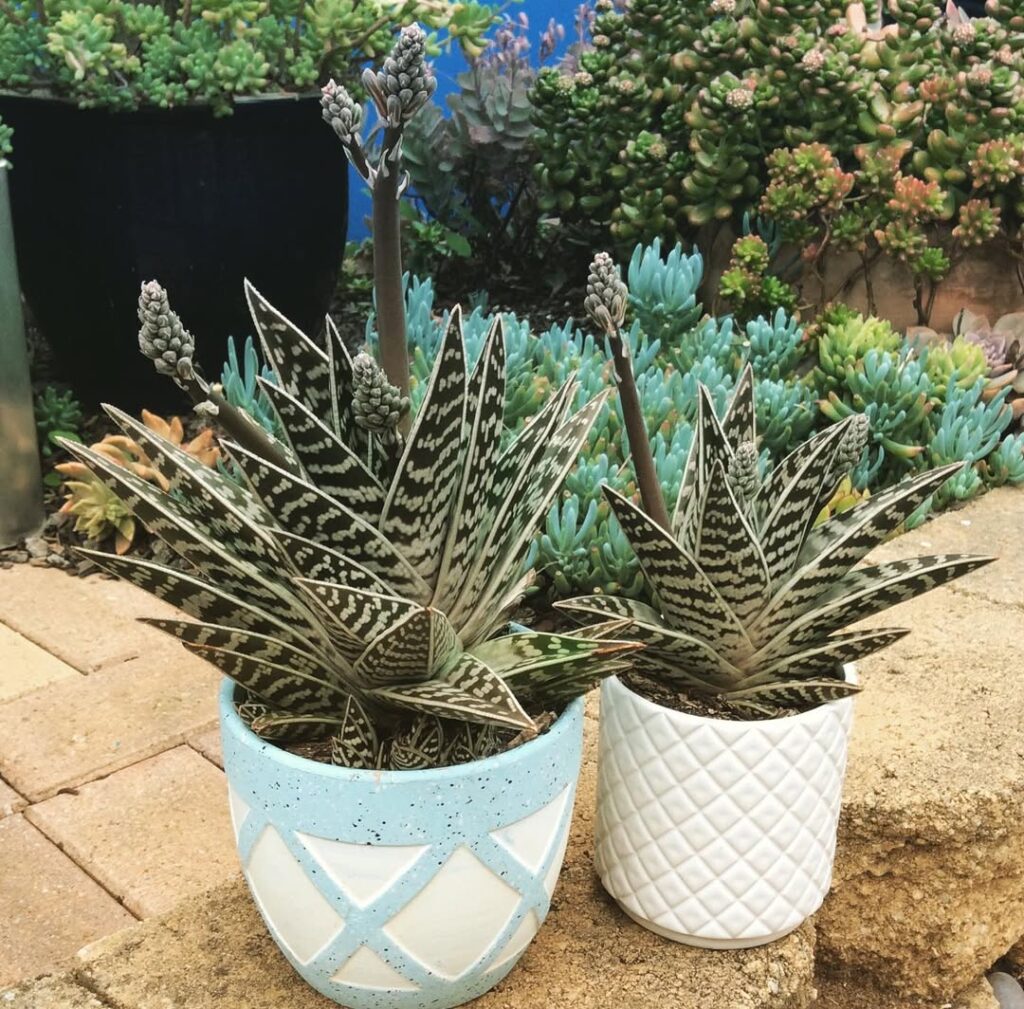
Tiger Aloe (Aloe variegata) is a striking compact succulent known for its distinctive triangular leaves arranged in three ranks, creating a symmetrical rosette pattern. The thick leaves are dark green with white horizontal bands and serrated edges, giving it a tiger-striped appearance. Growing to about 8-10 inches tall, this rare aloe produces tubular coral-pink to red flowers on tall stalks during late winter to early spring, making it highly sought after by collectors.
- Light: Bright indirect light to partial sun; protect from intense afternoon sun
- Water: Allow soil to dry completely between waterings; reduce watering in winter
- Soil: Well-draining cactus or succulent mix
- Temperature: Prefers 65-80°F (18-27°C); can tolerate brief periods below freezing
- Humidity: Low humidity tolerant
- Container: Pot with drainage holes; terracotta recommended
- Fertilizer: Light feeding with balanced fertilizer during growing season
- Propagation: Through offsets or pups at base of plant
9. Pink Diamond Kalanchoe
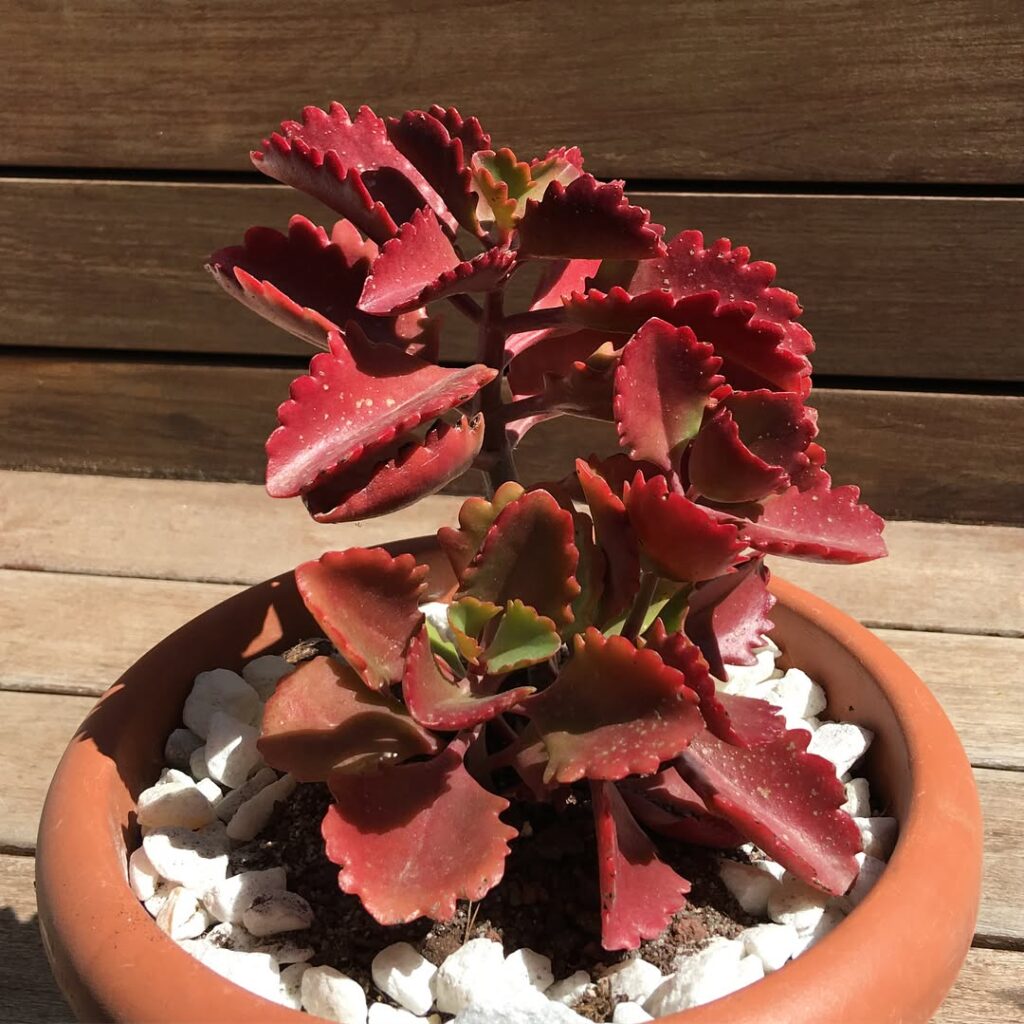
The Pink Diamond Kalanchoe (Kalanchoe longiflora) is a striking succulent known for its distinctive pink-tinged, diamond-shaped leaves arranged in tight rosettes. The fleshy leaves have a powdery coating that gives them a silvery-pink appearance, making this variety highly sought after by collectors. As the plant matures, it can develop clusters of small, tubular flowers in shades of yellow or white, though it’s primarily grown for its unique foliage coloration.
- Light: Bright, indirect sunlight; can tolerate some direct morning sun but needs protection from harsh afternoon rays
- Water: Allow soil to dry completely between waterings; reduce watering in winter months
- Soil: Well-draining cactus or succulent mix with added perlite or pumice
- Temperature: Prefers 60-75°F (15-24°C); protect from frost
- Humidity: Tolerates average household humidity; prefers dry conditions
- Container: Use pot with drainage holes to prevent root rot
- Fertilizer: Light feeding with balanced succulent fertilizer during growing season
- Growing Season: Active growth in spring and summer
10. Peach-colored Ghost Echeveria
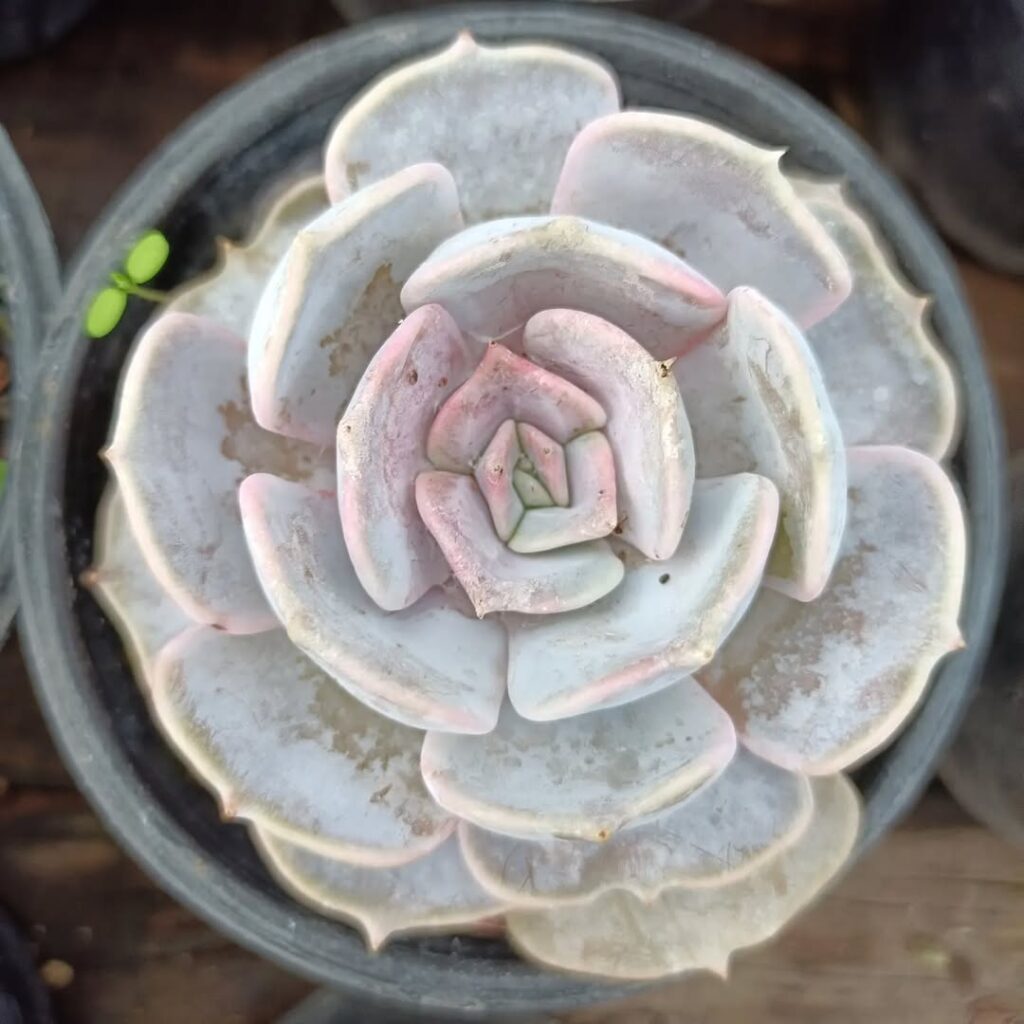
The Peach-colored Ghost Echeveria (Echeveria lilacina ‘Ghost’) is a striking succulent known for its pale, peachy-pink rosettes that can reach up to 6 inches in diameter. Its fleshy leaves have a powdery coating that gives them an ethereal, ghostly appearance, hence its common name. This rare variety is highly sought after by collectors for its unique coloration and compact growth habit, making it an excellent choice for both container gardens and rock gardens.
- Light: Bright indirect sunlight to partial sun; morning sun preferred with afternoon shade in hot climates
- Water: Water thoroughly when soil is completely dry; reduce watering in winter
- Soil: Well-draining cactus or succulent mix with added perlite or pumice
- Temperature: 65-80°F (18-27°C); protect from frost
- Humidity: Low humidity preferred
- Fertilizer: Light feeding with balanced fertilizer during growing season
- Container: Shallow pot with drainage holes
- Growing Zone: USDA zones 9-11
